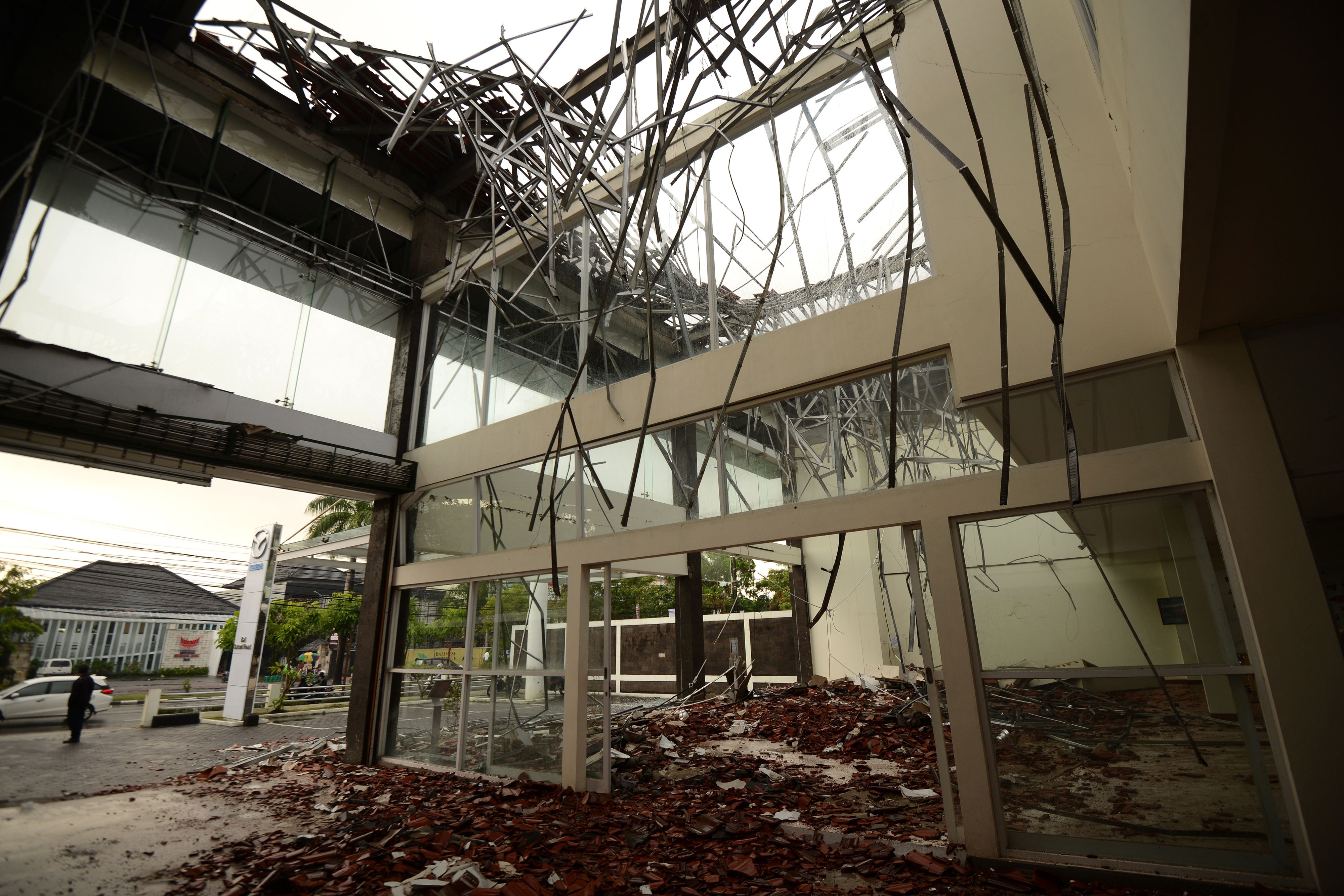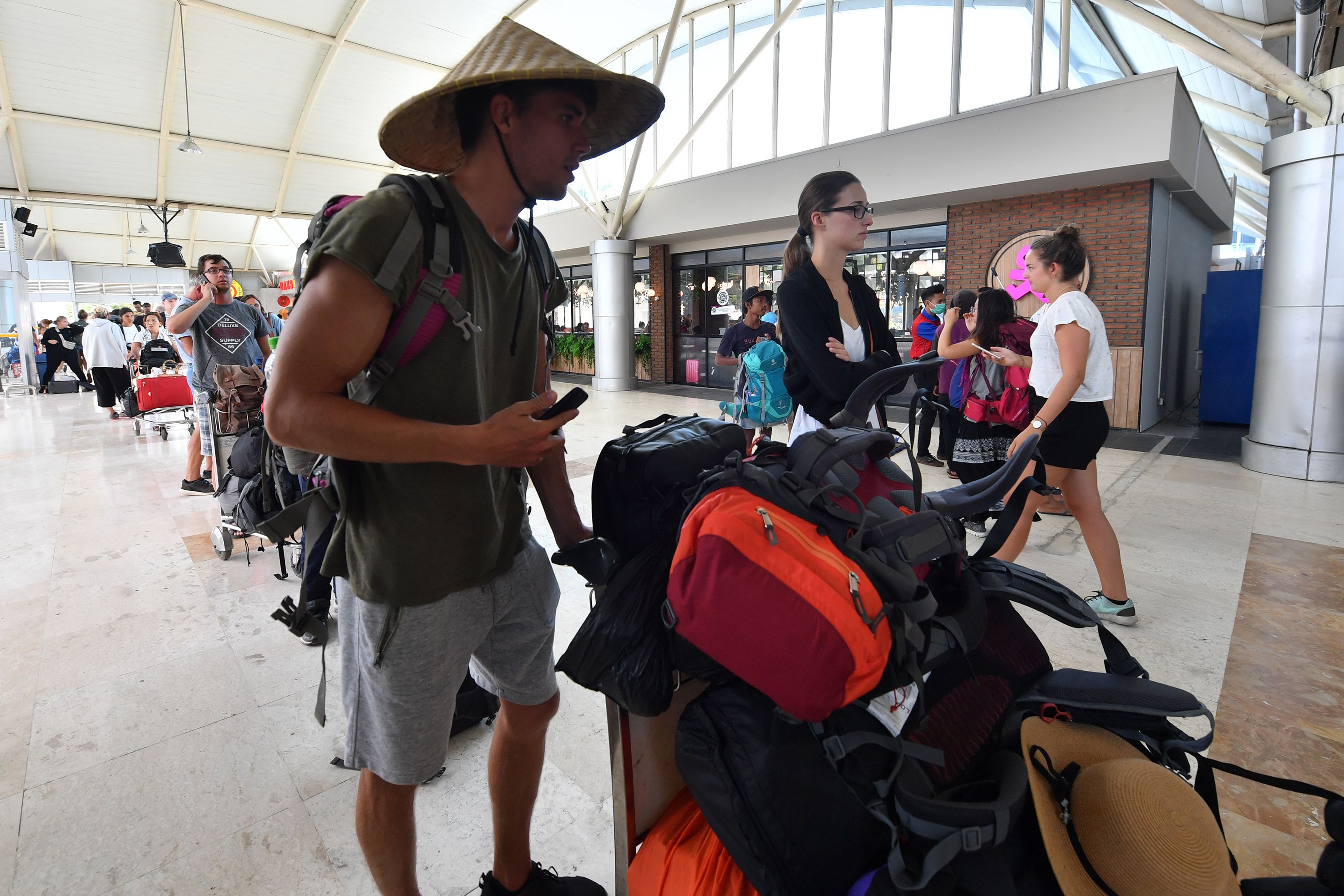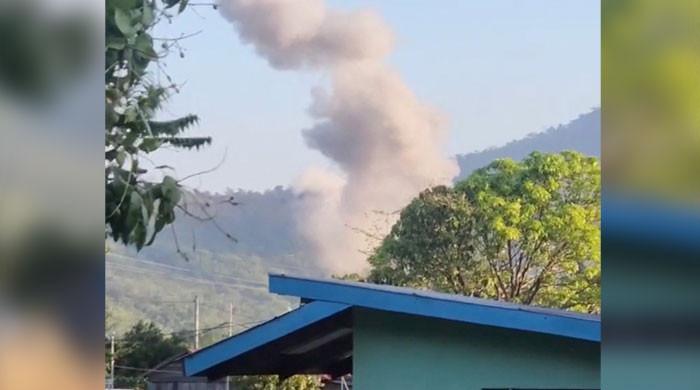Tourists flee Indonesia's Lombok island after earthquake kills 98
Officials said more than 2,000 people had been evacuated from the three Gili islands
August 06, 2018
PEMENANG: Rescuers used diggers and heavy machinery to clear debris and search for survivors on Monday after a magnitude 6.9 earthquake killed at least 98 people on Indonesia’s resort island of Lombok, prompting an exodus of tourists.
The National Disaster Mitigation Agency (BNPB) said it expected the death toll to rise once the rubble of more than 13,000 flattened and damaged houses was cleared away after the second powerful quake in a week.
Power and communications were severed in some areas, with landslides and a collapsed bridge blocking access to areas around the quake epicenter in the north - forcing rescue teams to bring in the heavy machinery.
The military said it would send a ship with medical aid, supplies and logistics support.
Indonesia sits on the geologically active Pacific Ring of Fire and is regularly hit by earthquakes. In 2004, the Indian Ocean tsunami killed 226,000 people in 13 countries, including more than 120,000 in Indonesia.

Officials said more than 2,000 people had been evacuated from the three Gili islands off the northwest coast of Lombok, where fears of another tsunami spread among tourists.
Michelle Thompson, an American holidaying on one of the Gilis, described a “scramble” to get on boats leaving for the main island during which her husband was injured.
“People were just throwing their suitcases on board and I had to struggle to get my husband on, because he was bleeding,” she said.
Ambulances with sirens blaring raced along the coast from north Lombok, but BNPB spokesman Sutopo Purwo Nugroho said emergency units in its hospitals were overflowing and some patients were being treated in parking lots.
The main hospital in the town of Tanjung in the north was severely damaged, so staff set up about 30 beds in the shade of trees and in a tent on a field to tend to the injured.
A boy with a heavily bandaged leg wailed in pain, an elderly man wore a splint improvised from cardboard strips of cardboard on a broken arm, and some hurt by falling debris still had dried blood on their faces.
BABY BORN
The Indonesian Agency for Meteorology, Climatology and Geophysics (BMKG) said more than 120 aftershocks were recorded after Sunday evening’s quake.
Lombok had already been hit on July 29 by a 6.4 magnitude quake that killed 17 people and briefly stranded several hundred trekkers on the slopes of a volcano.
At magnitude 6.9, Sunday’s quake released more than five times the energy of the earlier one, the United States Geological Survey website said.
The tremor was powerful enough to be felt on the neighboring island of Bali where, BNPB said, two people died. The first quake was also felt on Bali.
Despite it being a popular tourist destination, no foreigners were recorded among the dead, BNPB spokesman Nugroho told a news conference. Some 236 people were injured and more than 20,000 people had been displaced, he said.
“We have yet to ask for help from the international(community). But if there’s any friendly country who wants to offer help, please do,” Nugroho said.
The United Nations has offered to support any ongoing rescue and relief efforts if required.
Among the devastation, the Indonesian Red Cross said on Twitter it had helped a woman give birth at a health post after the quake. One of the names she gave the baby boy was “Gempa”, which means earthquake.
Among those displaced were residents of a northern village called Mentigi, who fled to nearby hills. Blue tarpaulins dotted the landscape as people prepared to spend the nights outdoors because of aftershocks or because their homes were destroyed.
“We are getting some aid from volunteers, but we don’t have proper tents yet,” said a 50-year-old villager sheltering with his wife and children, who gave his name only as Marhun.
Collapsed mosques
Najmul Akhyar, the head of North Lombok district, estimated that 80 percent of that region was damaged by the quake.
"We need heavy equipment because some mosques have collapsed and we suspect some worshippers are still trapped inside," he told Metro TV.
As authorities scrambled to assess the extent of damage in Lombok, some tourists were trying to leave.
"We tried to go to the airport but there was no taxi, no transport, no plan for evacuation," French tourist Jina told Metro TV.
"Later I stopped a car and I asked a local please take me and my family to the airport and he said ´´okay no problem´."

Singapore´s Home Affairs Minister K. Shanmugam, who was in Lombok for a security conference when the earthquake struck, described on Facebook how his hotel room on the 10th floor shook violently.
"Walls cracked, it was quite impossible to stand up," he said.
Bali´s international airport suffered damage to its terminal but the runway was unaffected and operations had returned to normal, disaster agency officials said. Lombok airport was also operating.
Indonesia, one of the most disaster-prone nations on earth, straddles the so-called Pacific "Ring of Fire", where tectonic plates collide and many of the world´s volcanic eruptions and earthquakes occur.
In 2004, a devastating tsunami triggered by a magnitude 9.3 undersea earthquake off the coast of Sumatra in western Indonesia killed 220,000 people in countries around the Indian Ocean, including 168,000 in Indonesia.










